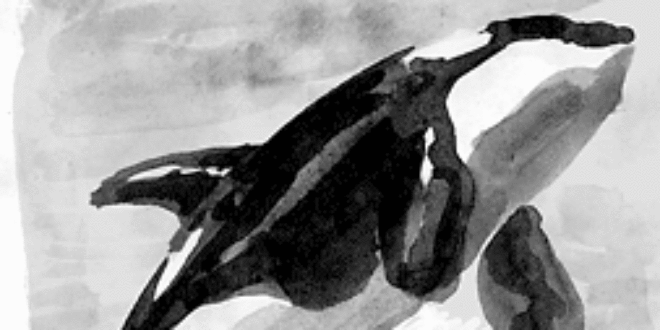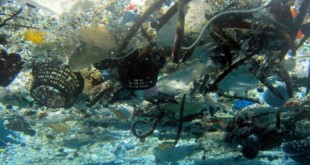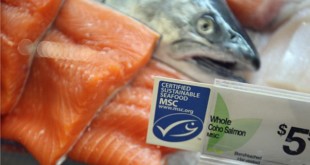Our orca whales are dying. By treating them like a financial resource — with tourist-filled boats chasing after them — we run the risk of consuming them down to the last one, as we have done with old-growth timber and fish. After years of argument driven as much by money as by science, we have reached a moment when the causes and remedial actions are relatively clear.
The orcas are starving, and all major agencies and conservation groups agree on this.
What’s worse, their numbers are collapsing. The current population crash is almost twice as steep as the last (in 1997-2001), when we lost about 17 percent of them over five years. All of this comes even after their declaration as “endangered” under the Endangered Species Act. This is the worst “natural” catastrophe the population has experienced on record. Although if it is caused by “loving the whales to death,” the cause will not have been natural at all.
When the orcas are starving, there are human behaviors that accelerate starvation. Strangely, their starvation does not correlate cleanly with the downturn in their prey, chinook salmon, alone. Several studies now seem to show that it is a combination of low fish count and high boat count correlate with whale death.
Power boats running to, from and with the whales from dawn to dusk are now known to cause several major problems related to starvation: their metabolic rates, measured by respiration, increase dramatically with boat presence, necessitating more food; they swim faster, dive longer and travel longer, less direct paths, when boats are present, also increasing food requirements; and sonar, their primary tool for hunting, is impaired by up to 97 percent by the presence of a single motorized boat.
Add in the obvious potential that fish are dispersed by the ongoing presence of multiple power craft, and you likely have further reduced survival chances.
The sum of these boating impacts is obvious: the orca need more food per day and get much less, at a time when food is already extremely scarce.
Many, many papers on the questions of boat/orca interactions have been published in the last decade and virtually all of them show these to be negative.
Most people know it is illegal to harass marine mammals, but I would guess that readers may not know the simple pursuit of our local whales violates federal law. Both the Endangered Species Act and the Marine Mammal Protection Act specifically state that pursuit is illegal.
This makes sense. Can you imagine an endangered wolf population, being chased all day every day by tourists on all-terrain vehicles? The situation with our orca is not much different.
Orca have too many man-made chemicals in their blubber; and it is easy to give anecdotal presentations on why pesticides are generally bad. But it is important to point out no one has shown any correlation between this and their death rates.
I recently asked a presenter on this subject for any correlation at all, and she admitted the answer remains negative. Recent research conducted by the University of Washington found “no time correlation” between pesticides and orca mortality.
Is there no connection at all between pollution and whale death? It is likely that, in the last stages of starvation, as the whales draw down their blubber reserves, they are suddenly exposed to these stored toxins, something that would not happen if they were not starved.
However, if slow-varying pesticides were the primary cause, we wouldn’t see the huge variations in population mortality we see today, nor would we likely have just lost two breeding females, the individuals with the lowest pesticide concentrations. The primary problem lies elsewhere.
What can we do?
There are few natural situations in which the stakes are so high, and the potential answer so cheap or easy. Removing the already-illegal commercial pursuit business is the simplest way of saving these animals. That action alone will have the effect of providing more fish for the whales, at a time when they are starving to death. Not publishing orca locations as they are called in would also be an obvious early step; rather, embargo this data for at least 24 hours, instead of inadvertently inviting harassment.
Since pursuit of the orca is already illegal, all this means is enforcing the existing Endangered Species Act. One can hope that the change in administrations will also include a change in respect for knowledge and science, and for the law.
Over 90 percent of local residents are against chasing the whales, based on a petition launched a few years ago by Orca Relief — a petition which became the most-signed petition in San Juan County history. Local residents’ feelings are both strong and clear: they do not want “their” whales being pursued.
Knowing that orca are again starving, with new science showing that boats accelerate that starvation, and under a new endangered status that further protects the whales from any pursuit, the solution to this problem seems obvious.
The real danger to tourist dollars is not that a handful of boat-tour operations stop, with visitors instead channeled to land-based watching at the increasingly popular Whale Watch Park (Lime Kiln State Park). The real danger to tourist dollars is that the whales starve to death, and are all destroyed.
We should enforce the existing law and stop pursuing the orca.
(From seattletimes.nwsource.com, by Mark Anderson, chairman of Orca Relief, www.orcarelief.org, and was founding executive director of The Whale Museum in Friday Harbor).
 Ocean Sentry
Ocean Sentry




